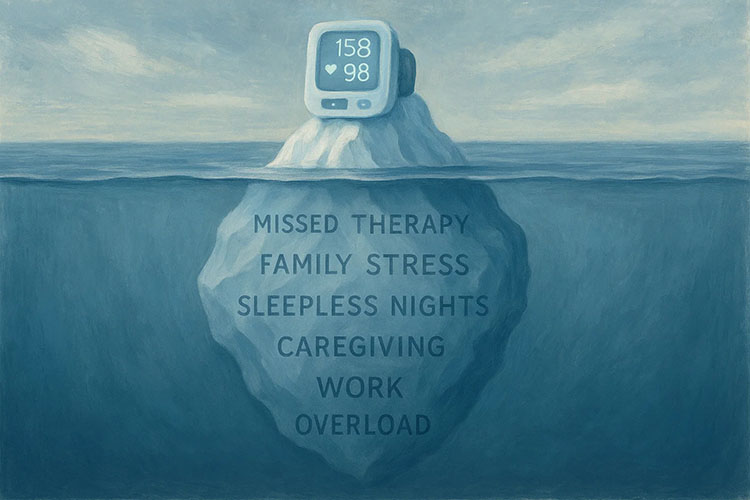
June is Men’s Health Month. Hypertension, also known as High Blood Pressure, is one ailment that males are at higher risk than females. Therefore, the monitoring and treatment of High Blood Pressure should be of greater concern to men than to women.
Men will generally have higher blood pressure than age-matched women. One exception is that after menopause, women without hormonal therapy will actually have higher blood pressure than age-matched men. Even with this exception, untreated hypertension is greater in men, because of men’s reluctance to seek medical treatment compared to women.
The fact that men are at greater risk for high blood pressure is confirmed through the Third National Health and Nutrition Evaluation Survey
Graph from AHA Journals

Why do men have higher blood pressure? The answer is not as clear as you might pressure. Prior to puberty, there appears to be little difference between males and females in blood pressure. With the onset of puberty and the increase of testosterone, blood pressure differences between males and females increase through each age range until the onset of menopause.
During the ages 13 to 15 years, systolic blood pressure was approximately 4 mm Hg higher in boys than girls. During the later teen years, 16 to 18 years, boys had higher systolic blood pressures than girls by 10 to 14 mm Hg. One interesting fact, the blood pressure in teen boys also does not dip as low at night as in girls. This can be seen in the online reference AHA Journals.
However, it may not be that testosterone that is the only key factor in the sex differences in blood pressure. It has been theorized that estrogen and other female hormones that become prevalent during puberty and decrease during menopause, may be the factor in lowering or maintaining low blood pressure.
Estrogen has been shown to stimulate nitric oxide (NO) production which may be the reason for lower blood pressure. Yet, the estrogen therapy given to postmenopausal women does not seem to affect blood pressure. No study has been done to conclusively show whether it is only a woman’s natural estrogen that is effective, or it is the use estrogen therapy that lacks the protective element of estrogen in blood pressure.
Some in healthcare have advocated for the use of estrogen therapy to help lower blood pressure in high risk men. Obviously, this can cause other risks and side effects that men may not want.
One key for controlling blood pressure, is to contain body fluid volume through the renin-angiotensin system (RAS). RAS is linked to plasma renin activity (PRA). Through a 9-year study, PRA was shown to be 27% higher in men than in women. The cause of this gender difference is unknown. RAS may play a role in the gender difference in blood pressure. Learning your RAS and PSA can help your doctor develop the best hypertension treatment for you.
Even the most effective treatment for hypertension is only effective if you know it is working. Through Remote Patient Monitoring (RPM), both you and your Primary Care Physician can see daily reports of how well your treatment is working .
As we acknowledge Men’s Health Month, let us empower men to be more involved in their healthcare, their treatments, and the overall health plans. Through RPM, men will see their hypertension numbers and the reduction that treatment offers.
Medek RPM is one of the nation’s leaders in Remote Patient Monitoring. Whether you are a man with hypertension or a physician treating men with hypertension, contact a Medek Representative to learn how RPM can help both patient and practice.





